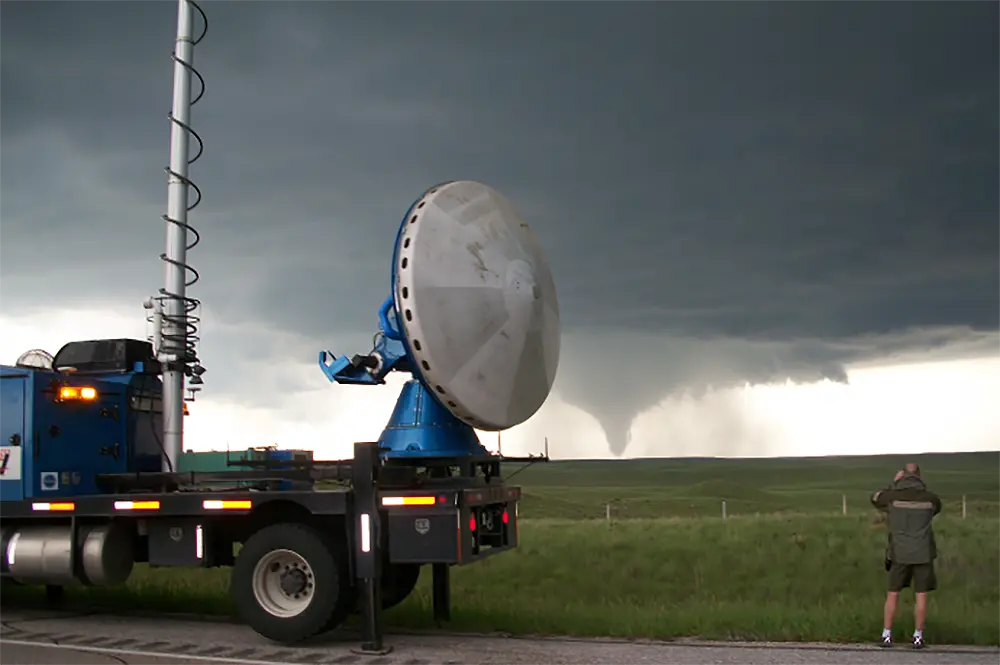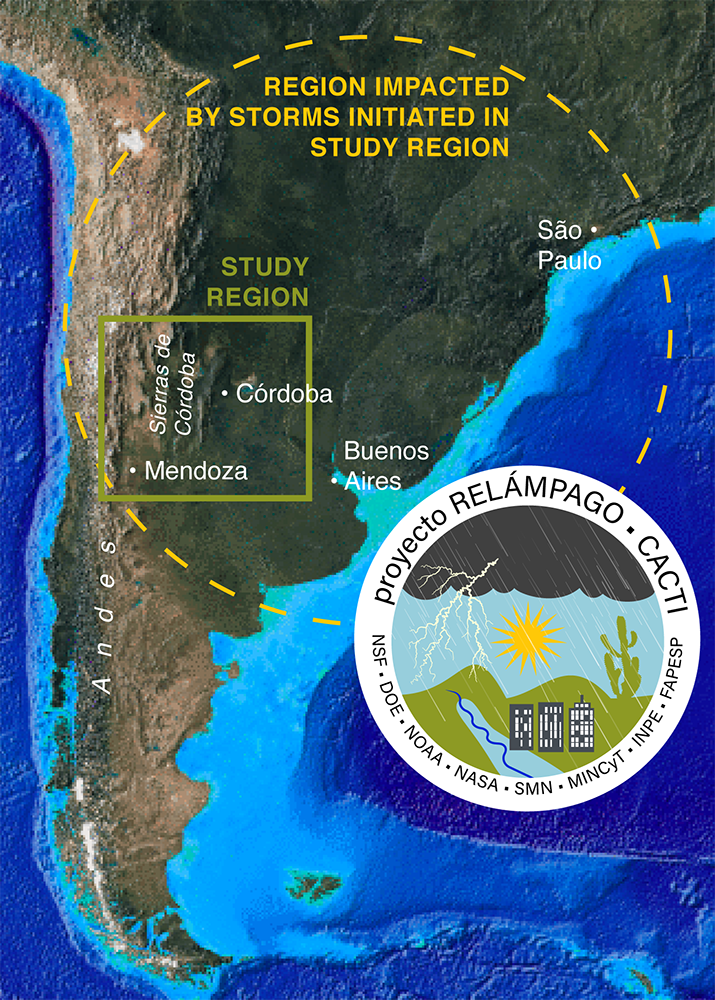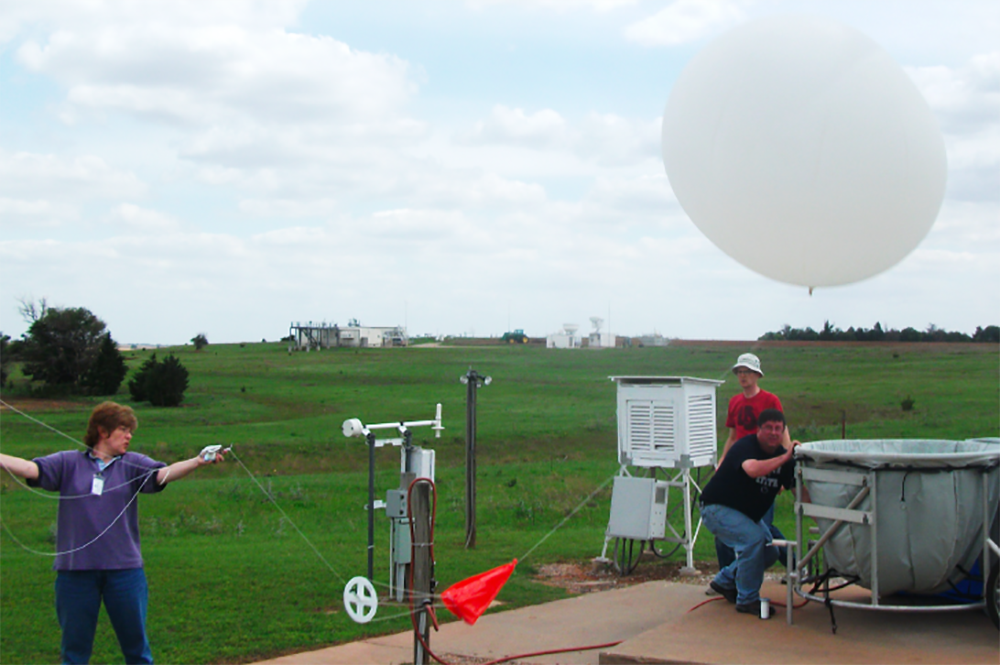
Illinois to lead $30 million atmospheric study in Argentina
Scientists know a lot about weather. However, there is still one aspect that isn’t totally understood: the initiation and development of thunderstorms.
That’s why atmospheric scientists at Illinois are soon heading to a small, geographical area in western Argentina to study what are considered the most intense thunderstorms on the planet.
Illinois is leading the $30 million RELAMPAGO-CACTI project, which includes some 40 researchers from around North and South America, including Brazil, Argentina, and several universities across the United States, such as Penn State, the University of Utah, the University of Washington, and Colorado State University. The project, funded in large part by the National Science Foundation and U.S. Department of Energy, includes nearly $4 million to the Department of Atmospheric Sciences at Illinois.
The project is also funded by the National Oceanic and Atmospheric Administration, NASA, and other agencies in South America.
According to Steve Nesbitt, professor of atmospheric sciences, the region they’re studying is unique for its topography, with its plains and Andes mountains in close proximity. This terrain provides the ideal situation for the formation of storms.
“Argentina turns out to be a very special place,” said Nesbitt, who’s also the principal investigator for the project. “The severe storms are similar in some ways to the U.S. Great Plains, where we experience severe thunderstorms, but the geography is quite a bit different, which may have important controls on how thunderstorms behave. It may be that Argentina sets the stage for thunderstorms which we think are the strongest on Earth.”

Near the city of Mendoza in Argentina, there are many wineries that must handle the brutal effects of the thunderstorms. Wineries in the region put nets over their crops to protect them from the storms, Nesbitt said, but even so, it’s not uncommon for them to lose up to half of their crop each year to hail.
The silver lining may be what these vicious storms reveal. The RELAMPAGO-CACTI project aims to better understand thunderstorms, and how to better predict them. (RELAMPAGO stands for Remote sensing of Electrification, Lightning, And Mesoscale/microscale Processes with Adaptive Ground Observations, but also translates to “lightning flash” in Spanish and Portuguese. CACTI is an acronym for Clouds, Aerosols, and Complex Terrain Interactions.)
Jeff Trapp, professor of atmospheric sciences and co-investigator for the project, said the research team must start with the question of “why” in order to gain insight on the phenomenon.
“Why these are the most intense on Earth? We have some hypotheses but because we don’t have the observations to prove these hypotheses, we need to go collect them,” Trapp said. “Also, we need to know not just why and how these storms exist, but also what role this unique topography plays in thunderstorm’s initiation, formation, and evolution.”
The project will begin this August. The field campaign will launch in November of 2018 and last into 2019.
“There’s a lot of coordination that needs to be done between institutions that play a role and therefore, there needs to be meetings in order for us to know when and what we’re going to measure, how we’re going to measure, where we’re going to put these instruments, and how the conditions are going to be,” said Paloma Borque, atmospheric sciences post doctoral fellow involved with the project. “So there’s a lot of planning for hopefully making a very successful experiment.

Illinois researchers, which also include atmospheric sciences professors Francina Dominguez and Deanna Hence, will deploy mobile storm observations that will measure the structure of storms and air motion, Nesbitt said. From there, data and observations from roughly a nine-month period will be collected. Then, this data will be compared to model simulations run on supercomputers to improve weather predictions.
While the project focuses on this small area and specific occurrence, Nesbitt said the findings will be crucial for greater understanding of global weather and climate.
“(With this research) we’ll be helping agricultural regions not only with hail, but with flooding and local infrastructure to be more resilient to hazardous weather,” Nesbitt said.
And once a more accurate model is created from the data, it could be used in areas of the world, potentially helping many agricultural regions avoid loss of crops.
“We’re trying to predict rainfall, especially the intensity of rainfall, which is of course very important for agriculture,” Nesbitt said. “In many agricultural regions, thunderstorms in the summer are the primary rainfall the region experiences, so it’s vital to predict these kinds of impacts and how agriculture may be affected by climate change.”